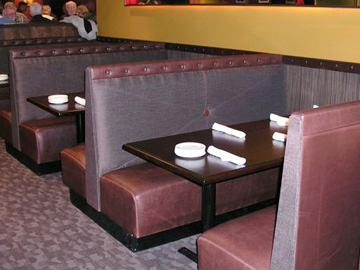 A few careless words in an opinion can spawn dozens of lawsuits and may create precedents that cost property owners and operators tens of thousands of dollars in legal fees if not in remediation costs. The question of whether compliance with ADA Standards and Guidelines is sufficient to avoid an ADA claim illustrates just how this can happen.
A few careless words in an opinion can spawn dozens of lawsuits and may create precedents that cost property owners and operators tens of thousands of dollars in legal fees if not in remediation costs. The question of whether compliance with ADA Standards and Guidelines is sufficient to avoid an ADA claim illustrates just how this can happen.
Paulick v. Starwood Hotels & Resorts, 2012 WL 2990760 (N.D. Cal.) provides a good example of a Court that properly applied the Guidelines to a plaintiff’s claims. In Paulick there was considerable discovery, a good deal of pleading practice and some remediation. When the dust settled the only item the Court was willing to consider was the accessibility of booths and tables in a restaurant. The plaintiff argued that the 5% requirement for accessible seating in the ADA Accessibility Guidelines had to be met for each kind of seating; that is, 5% of the tables had to be accessible and 5% of the booths had to be accessible. Otherwise, the plaintiff argued, disabled individuals would not have the benefit of booth seating. The defendant argued that the guideline required only that 5% of the overall seating be accessible. The Court found for the defendant on a technical reading of the Guidelines, but also agreed that the 5% requirement applied to the seating as a whole, not to different individual kinds of seating. This holding is in line with cases like Lara v. Cinemark USA, Inc., 207 F.3d 783 in which the Fifth Circuit rejected a rule that would have required a general equality of experience requiring consideration of the “subjective and undoubtedly diverse preferences” of disabled customers.
Plaintiffs often reject the notion that compliance with the Guidelines precludes a finding of discrimination. In the case of a restaurant, for example, plaintiffs will argue that because booth seating is desirable, a failure to make booth seating available to those in wheelchairs is discrimination regardless of compliance with the Guidelines. Some courts agree. For example, in Kohler v. CJP Ltd, 818 F.Supp.2d 1169 (C.D. Cal. 2011) the Court found that the fact that “barriers identified in the complaint do not violate the ADAAG” did not mean there was no ADA violation.
A look at the authorities cited by Kohler and similar opinions shows that they misunderstand the relationship between Standards and the definition of “discrimination.” These cases frequently start with Fortyune v. American Multi-Cinema, Inc. and its holding that merely having accessible seating did not preclude a claim for discrimination when the theater failed to require patrons to vacate companion seats. They may also cite Celano v. Marriot Int’l Inc. for the similar proposition that a failure to offer accessible golf carts could be an ADA violation even though, at the time, there was no Guideline requiring accessible carts.
Neither Fortyune nor Celano was based on the kind of discrimination that was at issue in Paulick and Kohler. In Fortyune the discrimination was based on the failure of the defendant to have a policy enforcing handicapped seating rules. Policy and procedure violations under 42 U.S.C. 12182(B)(2)(A)(ii) are distinct from violations of the Guidelines. In Celano there was simply no regulation at all governing the provision of golf carts. In the case of restaurant seating there are specific guidelines that are intended to provide a safe harbor and an objective means of determining whether a barrier to access exists.
Where there is a Guideline or Standard, businesses should be able to rely on that standard when determining whether they must remove a possible barrier to access. Dicta in cases like Fortyune and Celano may read as if the ADA permitted claims for some kind of general “discrimination” that might require more than the guidelines, but a careful look shows that Paulick correctly applied the law. Owners, operators, and most importantly the courts should reject any suggestion that a facility that complies with the Standards or Guidelines may nonetheless discriminate because compliance does not produce perfect equality.

